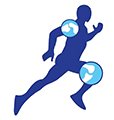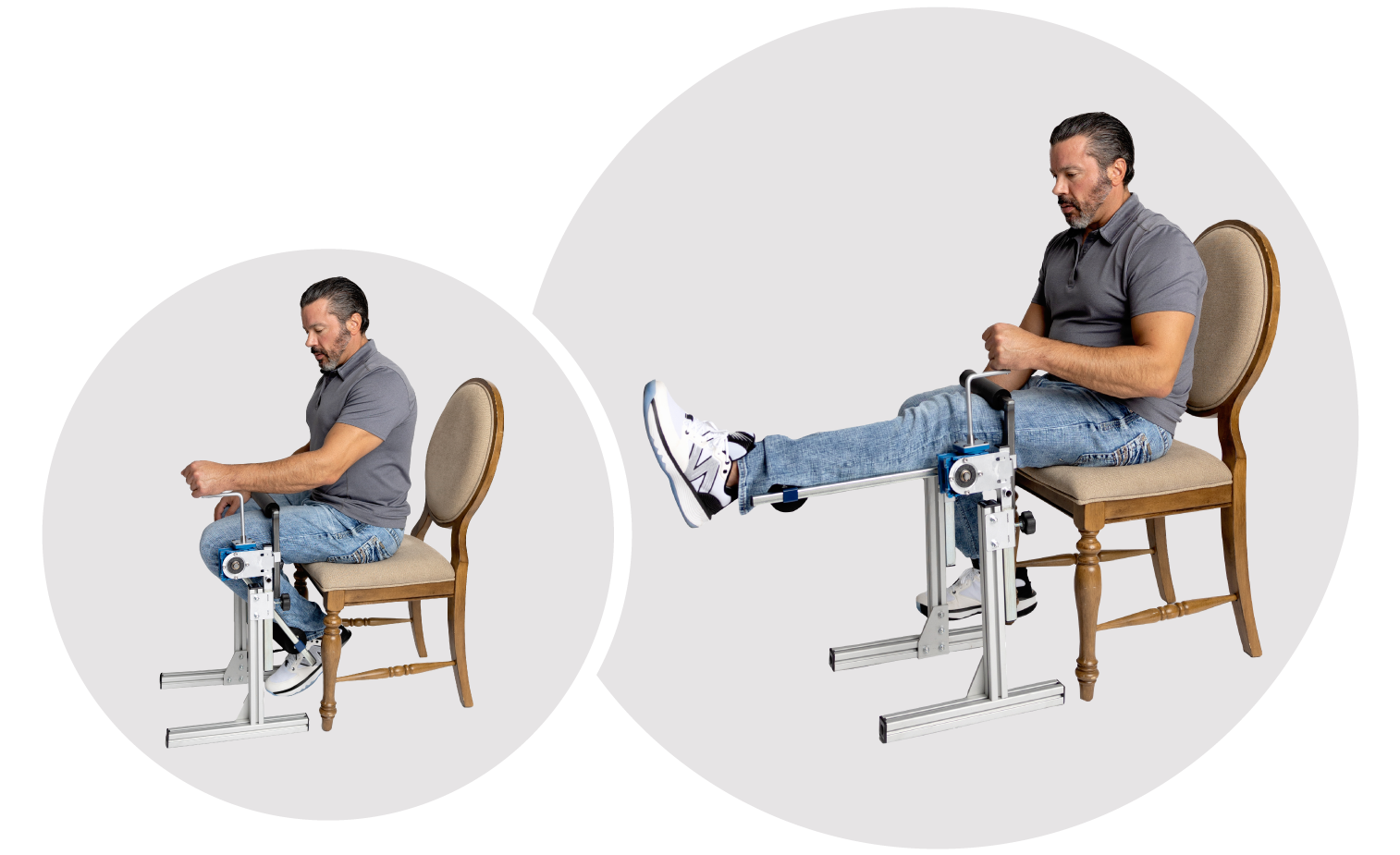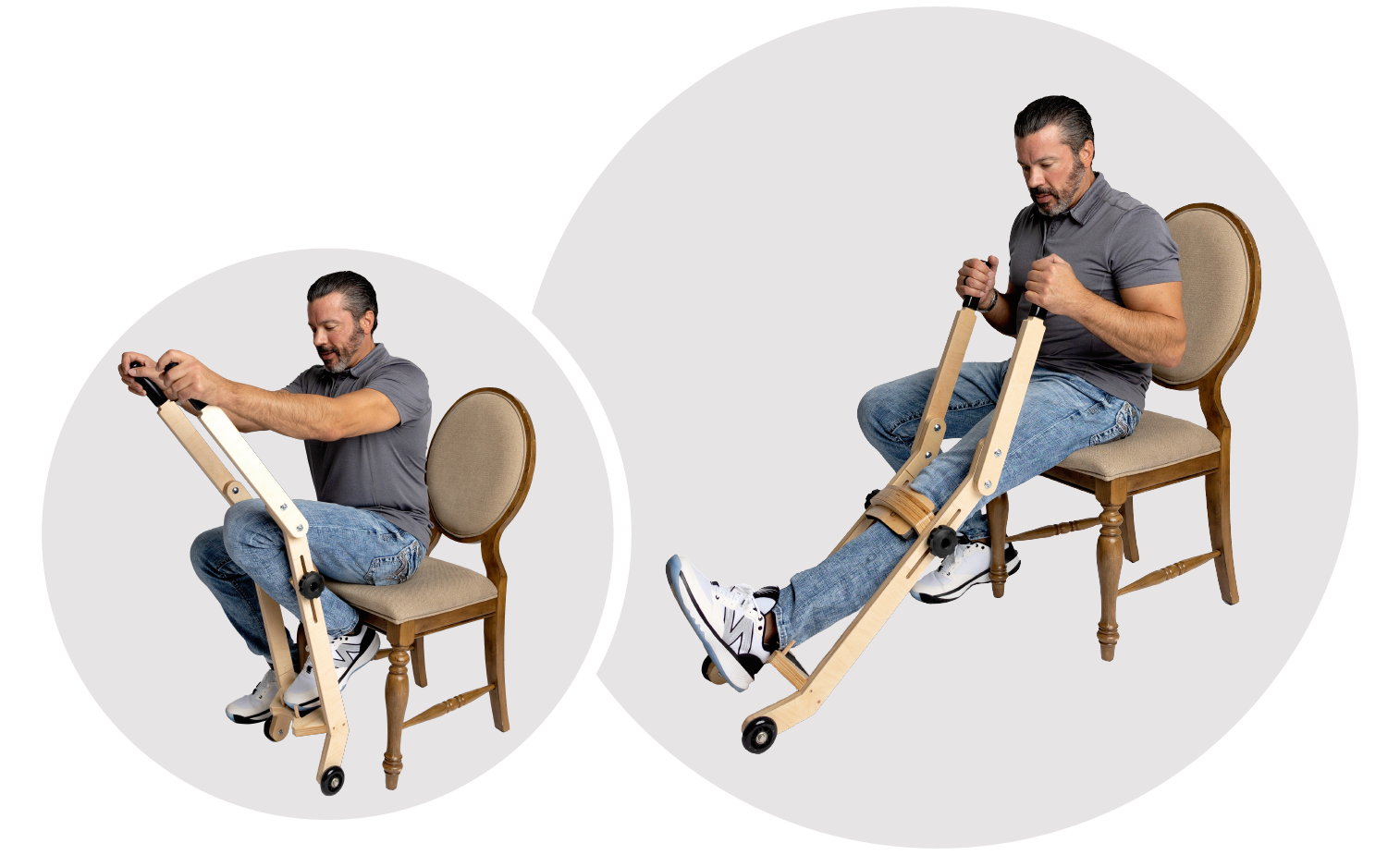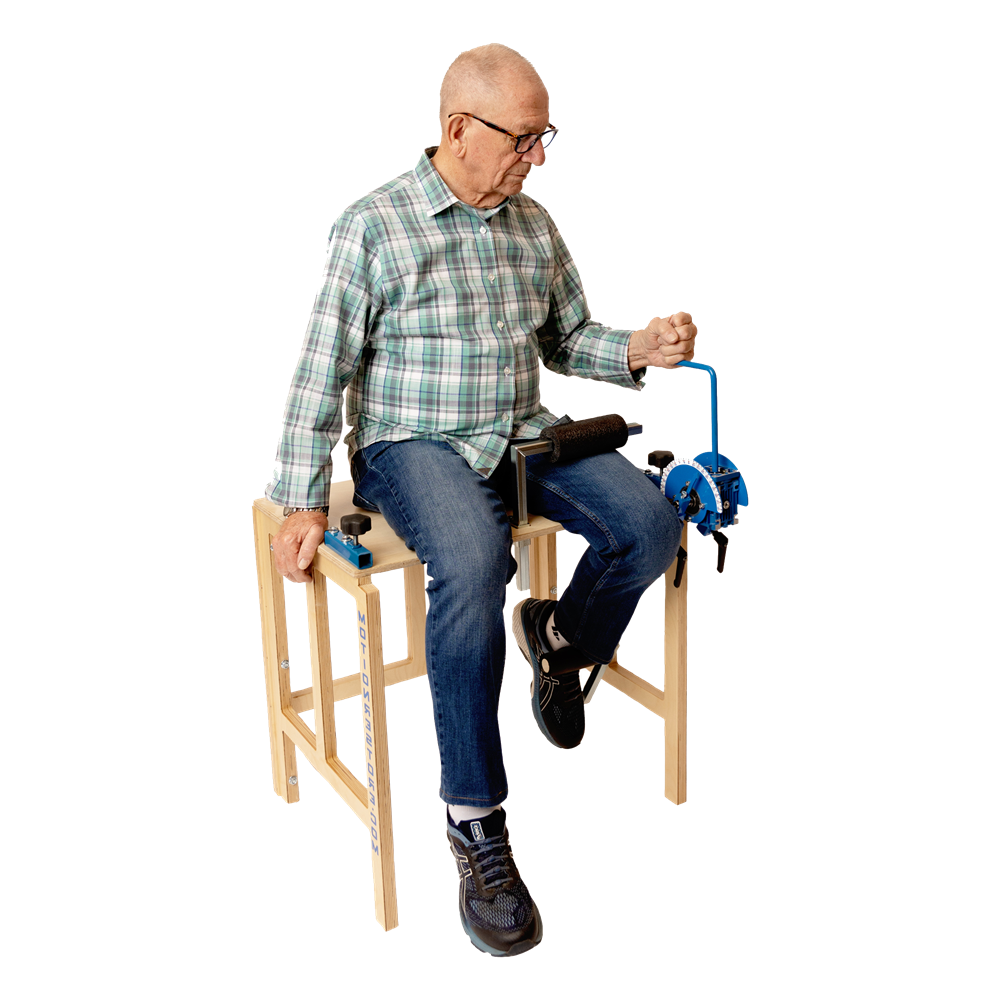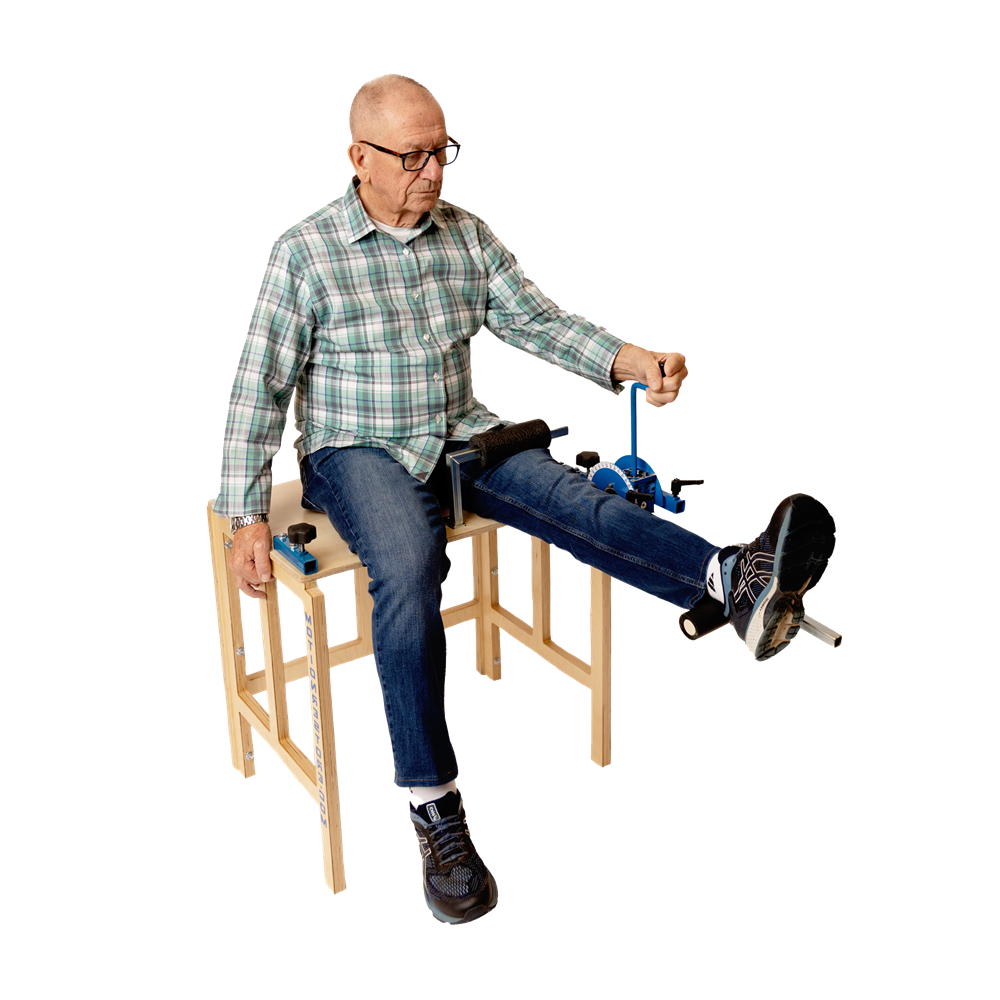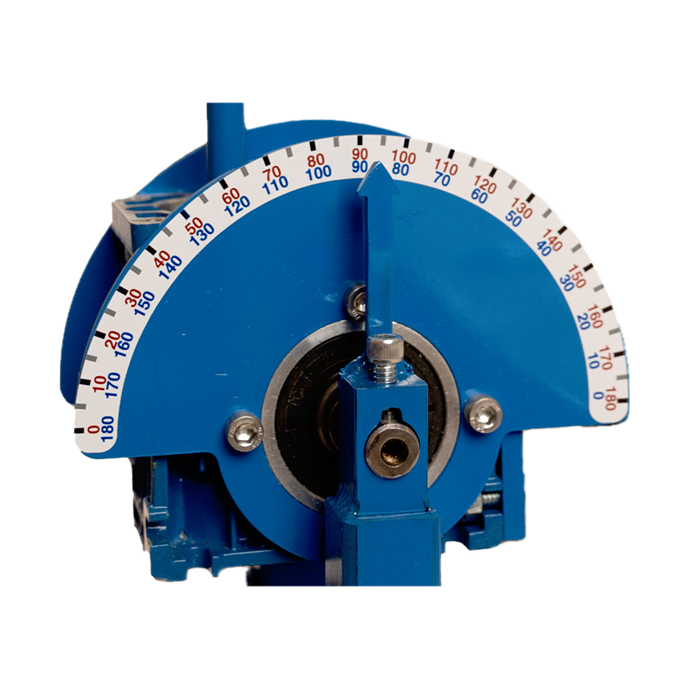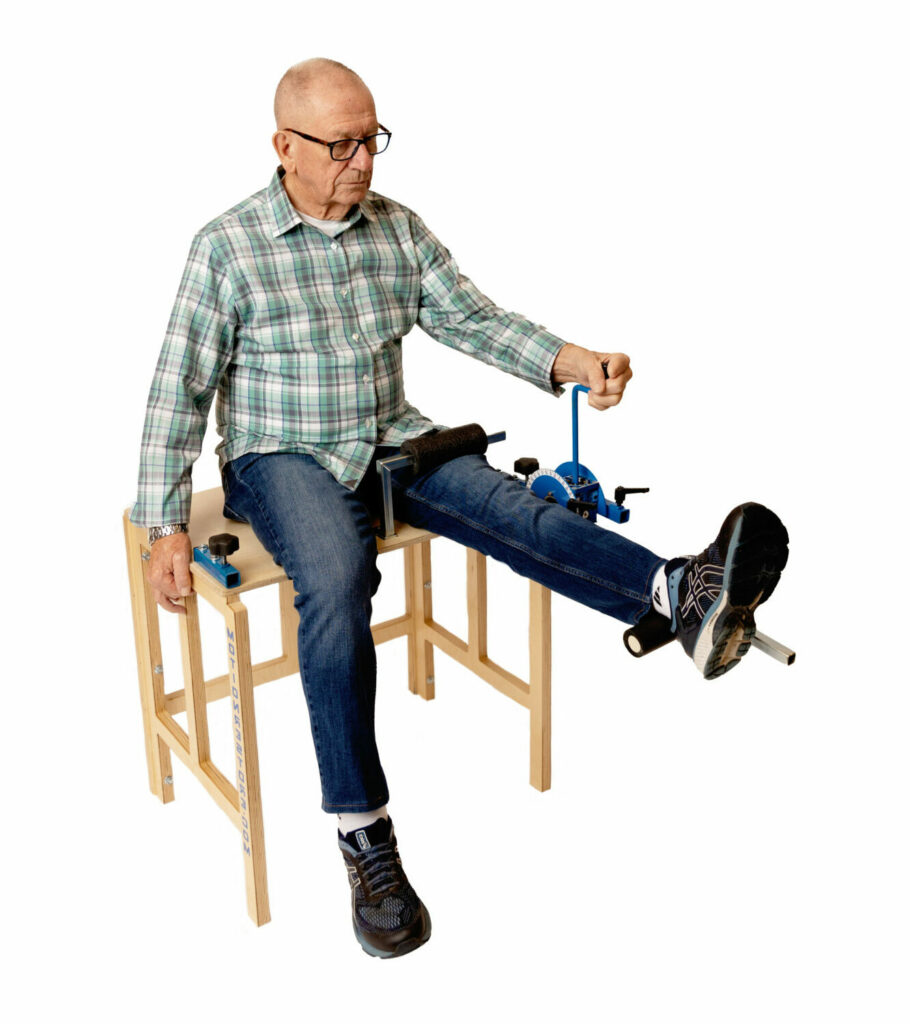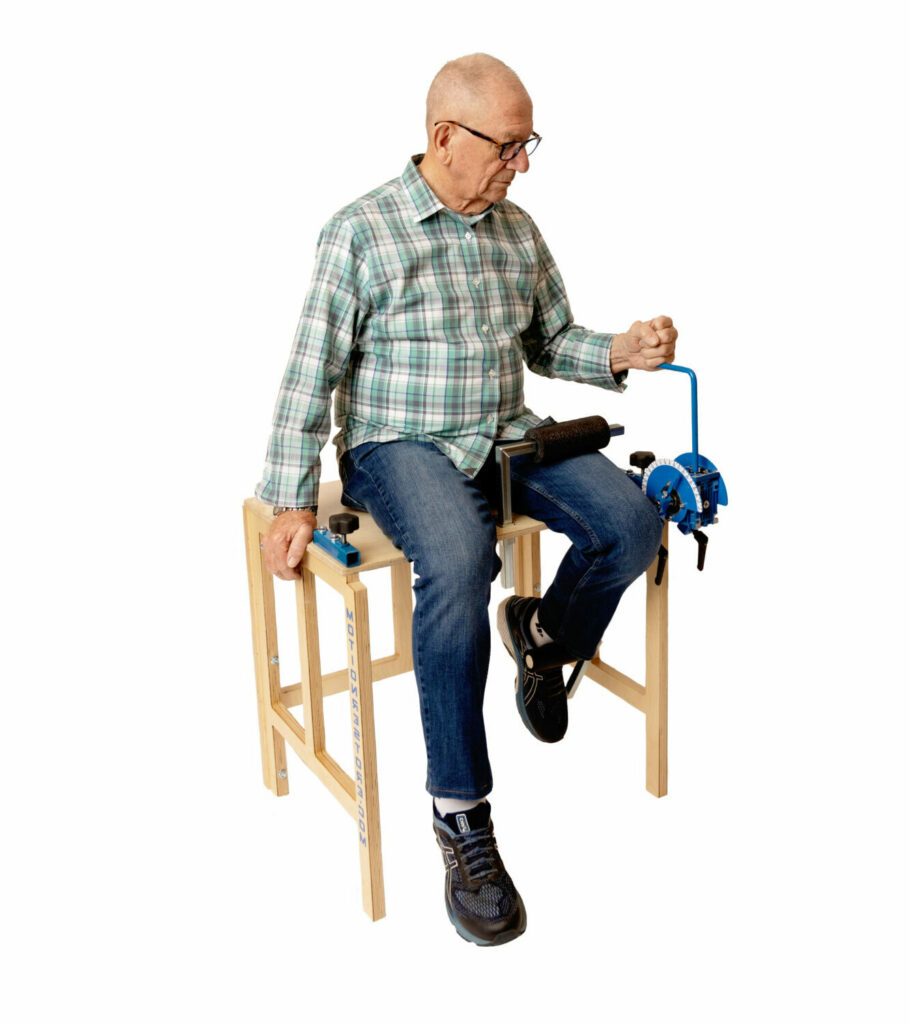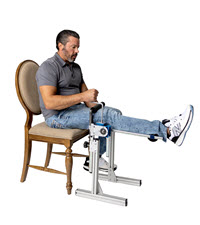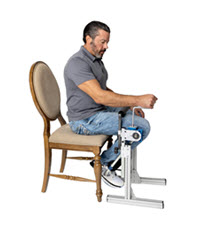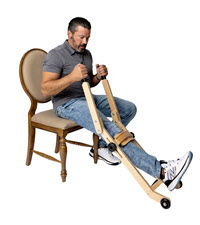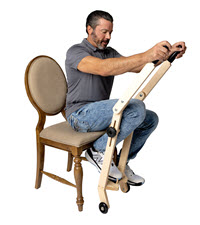Motion is Life,
Motion is Freedom
Designed for physical therapists to aid patients in the rehabilitation and maintenance of knees.
Designed to be used with a chair in the clinic or at home to aid in the rehabilitation and maintenance of knees.
Designed to aid in the rehabilitation and maintenance of knees at home
With the use of the Knee Works at the clinic and at home
the Knee Works becomes a new and inexpensive way for the patient
to restore full range of motion

Knee Flexion / Extension
Knee Works is intended to be an effective alternative to constant passive motion devices (CPM) and other rehabilitation tools used early in the healing process. It is affordable, functional, and portable to be used at home and in the clinic. Its simplicity helps the orthopedic surgeons rehab team better manage their patient’s recovery. Models 100 has a built in goniometer that can be used to monitor joint range of motion including a gear box with easy turning handle to free your hands and keep the knee in flexion or extension for a longer period of time. More importantly, the Knee Works can be used to alter the dysfunctional muscle memory that can only occur when the patient is an active participant in their recovery.
Manual
Video Instruction
Model 100
Model 200
Model 300
Testimonials
Physical Therapist Specialist and patient thrilled with results of the Knee Works 300
I recently had my second knee surgery. I have never recovered from knee replacement surgery faster than I did thanks to my use of the KNEE WORKS. Just a few minutes each day, and at my own pace. I found that I was both strengthening my leg and improving my range of motion quicker and easier than I had previously.
My physical therapy specialist was thrilled with my results – and so was I. I highly recommend the Knee Works to anyone looking for an effective in-home post-surgery restoration device.
Sandra F.
Post surgery patient
Surgeon likes that equipment is priced so that patients can purchase
The Knee Works provides substantial improvement in dealing with knee problems. The machine allows the desired degree of flexion and/or extension. The equipment is easy enough to understand and inexpensive enough that the patient who uses it under the direction of a therapist has the option to purchase a unit for continued use at home.
James A Urban,
M.D., Orthopedic Surgeon
Motion Restore Device has been outstanding additions to clinic
Both upper and lower MRD’s have been outstanding additions to my PT outpatient clinic. They are wonderful supplements to my manual therapy and other PROM/AAROM/AROM activities post knee surgery and injury. They are easy to use and do not take up much space. The patients love it as it gives them control over the extension and flexion knee stretch. The Physical Therapist can setup the patient on the machine and let them work on ROM for a specified time. The goniometer allows the patient to get feedback on degrees of progress.
Ken Greenstreet,
Owner of Fountain Hills Physical Therapy Clinic,
Fountain Hills, Arizona
Knee Works accelerated recovery
I had two knees replaced, six months apart. The Knee Works was one of the best part of my Physical Therapy and really accelerated my recovery. Because I had complete control over how far I could push the lever on the machine to get maximum bend, I did not worry about the pain, so I was not tensing up. I think being in control made me progress faster because I could ease back if it became too painful. I think the Knee Works really accelerated my recovery.
Peg Zarlengo,
Rio Verde, AZ
User of Knee Works as follow up care
After experiencing osteoarthritis knee pain in both knees, I had the Synvisc injections for the past three years. To maintain my knee joints and assure full rotation, I exercise the knees with weighted knee strengthening exercises and to assure full knee rotation, I also use the Knee Works. After an extended “mall type stroll” or sitting in a confined space for any extended period of time, I will occasionally feel a slight “burning” behind the knee when I rotate the knee rearward. This sensation will totally disappear when I use the Knee Works!
RW, Roseville, MN
Contact Us
with Questions or to Order
Contact Us
"(Required)" indicates required fields
We provide a 7 Day Money Back Guarantee on every unit. Volume discounts available when ordering multiple units.


